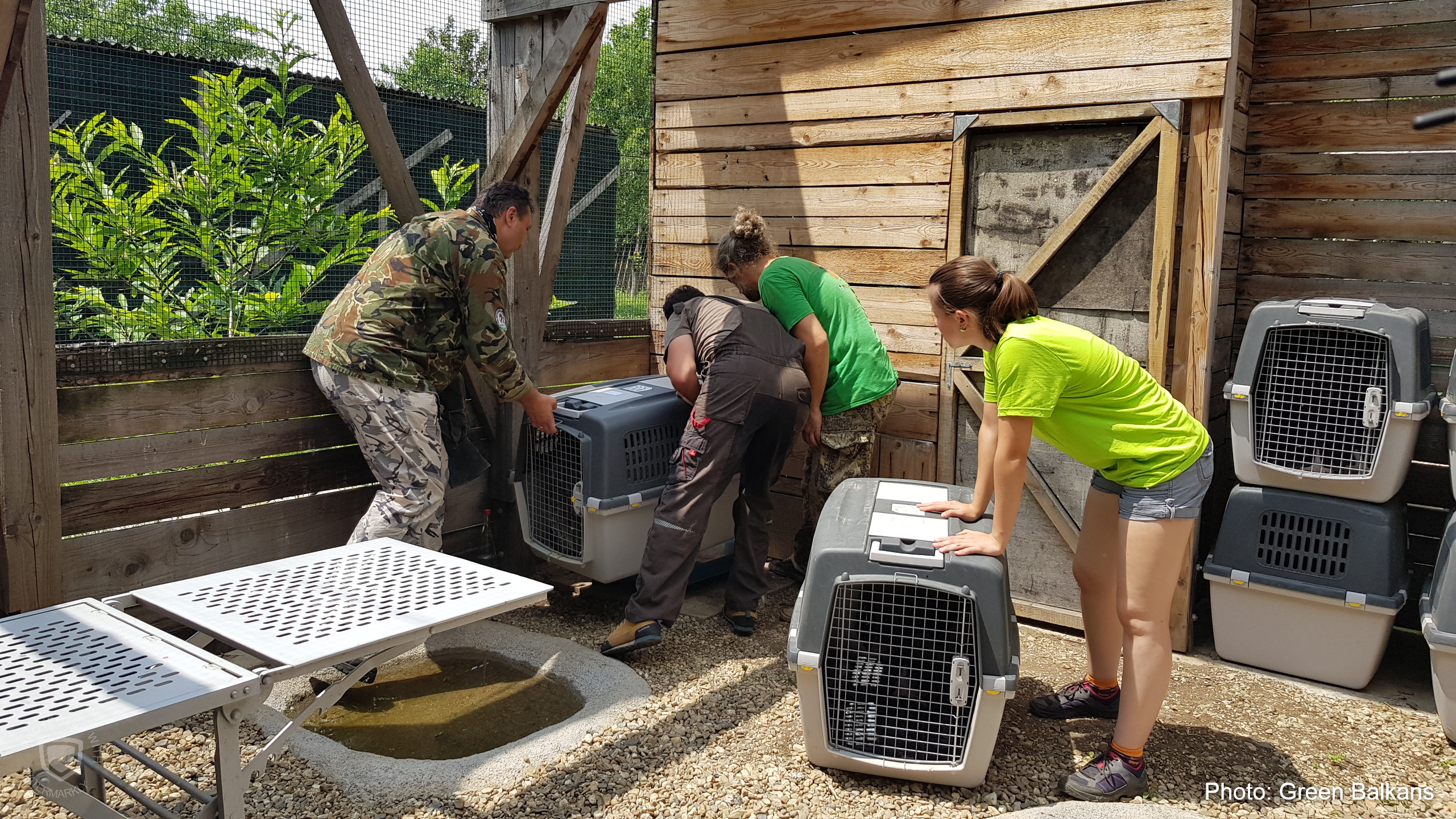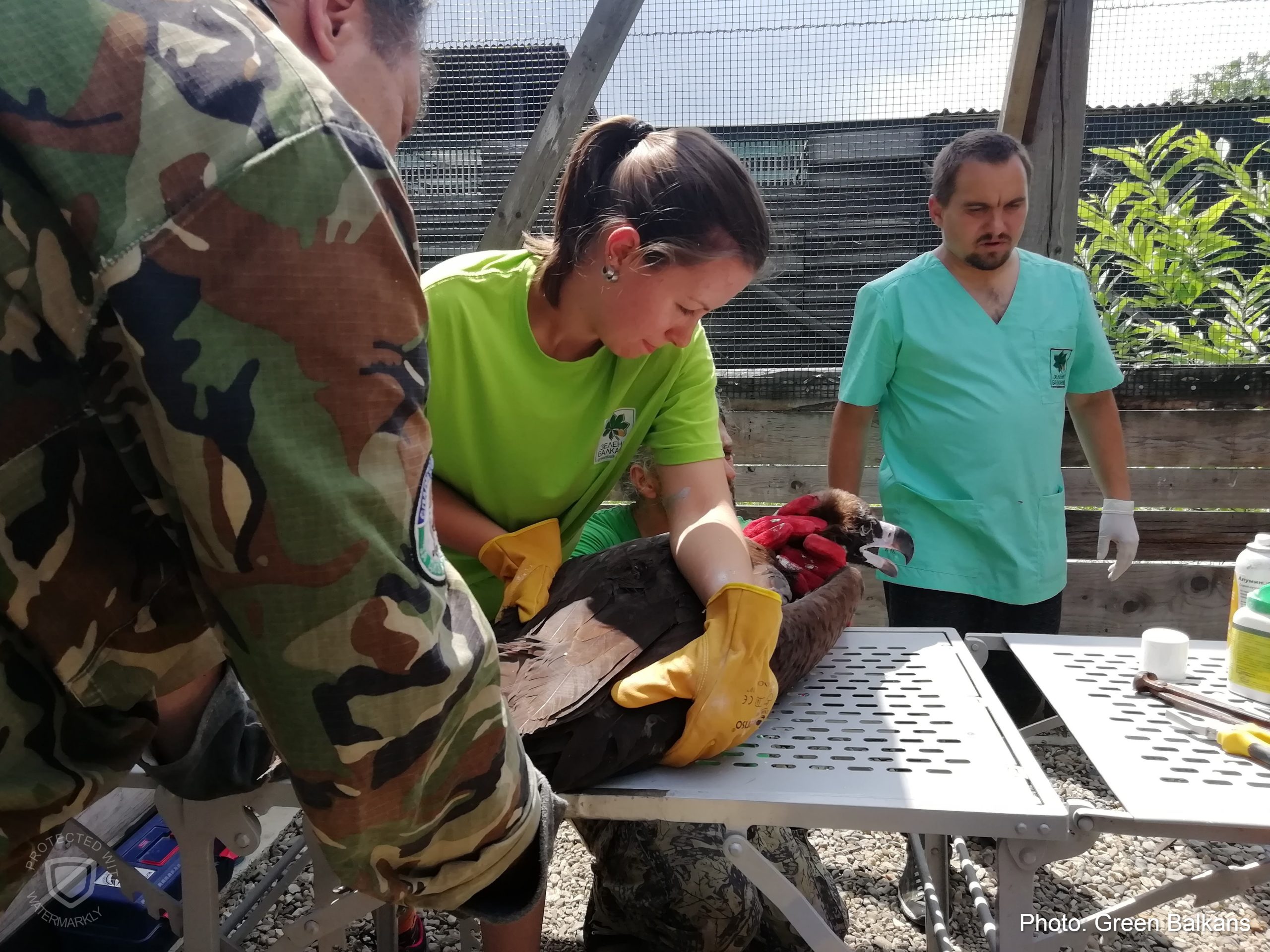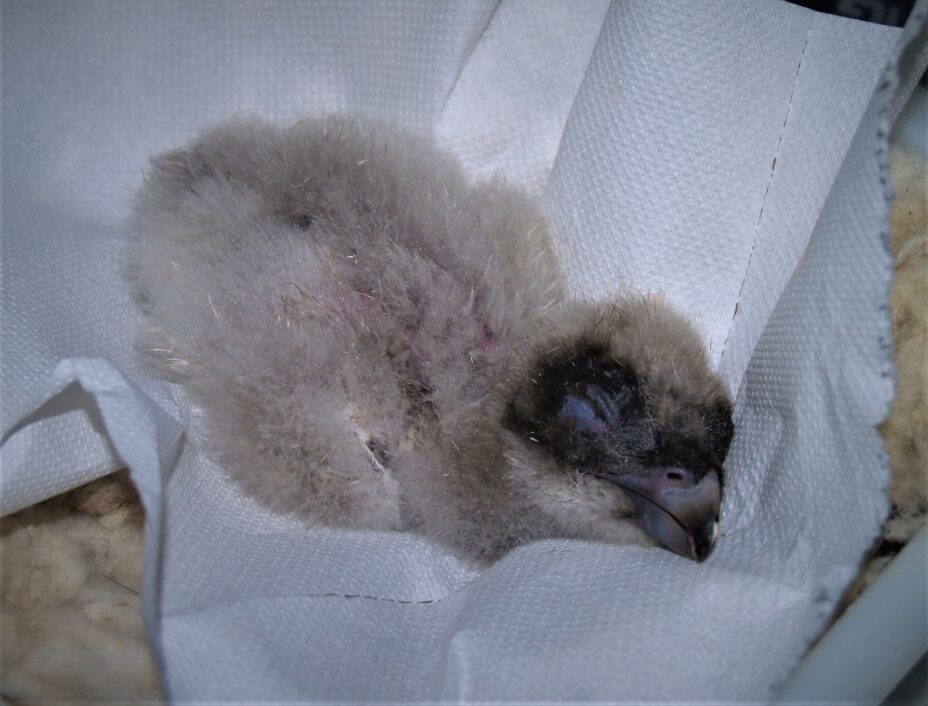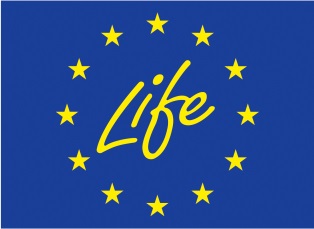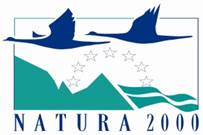
Ten Cinereous Vultures began their journey from Spain on Friday 7 June, travelling over 4,000km to reach Bulgaria. They arrived in Bulgaria on Monday 10 June and were received by the Vultures Back to LIFE project team. This was the second transportation of this species from Spain, in an effort to restore the Cinereous Vulture population in Bulgaria.
Reintroducing Cinereous Vultures in Bulgaria
The Cinereous Vulture was once a common sight in the skies of Bulgaria, but over the 20th Century, the population declined to the point it was declared extinct in the country and most other Balkan states by the 1980s. Changes in farming practices reducing food availability and the illegal setting of poisoned baits to combat predators were the key reasons responsible for their extinction. Now, the Vulture Conservation Foundation, in collaboration with the Bulgarian wildlife conservation charities, Green Balkans and Fund for Wild Flora and Fauna, is working on an ambitious conservation project Vultures Back to LIFE to bring the species back to Bulgaria for the first time in decades. Last year, we transported 12 Cinereous Vultures from Spain to Bulgaria, which was a milestone for the conservation of the species in the Balkans. Ahead of their release into the wild this year, the vultures spent 10 months in aviaries at Sliven and Kotel. We are happy to say that the vultures are adapting well in nature and continue their adventures in the Balkans.
The second group arrives in Bulgaria
This year, we managed to secure ten Cinereous Vultures, four males and six females, from Extremadura in Spain. Before their transport, all the birds were tested for heavy metals (Pb & Cd), antibiotics, anti-inflammatory drugs, Avian Flu, Newcastle and sex determination. They spent an official quarantine period in AMUS to obtain TRACES, the digital veterinarian certification tool. They left Spain for Bulgaria on Friday 7 June.
On Monday 10 June, the ten Cinereous Vultures arrived in Bulgaria. Our colleagues in Bulgaria were thrilled to receive the vultures, which are the second batch from Spain. Once they arrived, the ten vultures were admitted at the Green Balkans Rescue Center in Stara Zagora, where experts did a series of tests, determining that the birds were well and healthy.
The vultures will be quarantined at the rescue centre for some time and then will be transported to their aviaries, where they will spend some months. This will help the birds to acclimatise to the Bulgarian environment and help prepare them for their release into the wild.
Background of the ten Cinereous Vultures
The ten Cinereous Vultures were born in the wild in Extremadura (Spain) during last year´s breeding season. The young birds left their nests earlier and were found in distress, suffering from malnutrition and weakness. They were then taken to the wildlife rehabilitation centre of Los Hornos (Junta de Extremadura). After a period of recovery, they transported them to the wildlife rehabilitation centre of AMUS (Acción por el Mundo Salvaje) for a pre-transport quarantine period.
The Regional Government of Extremadura (Junta de Extremadura) donated the birds, as a partner in this project, responsible for the detailed monitoring of the Cinereous Vultures in Extremadura. This is the most important Spanish region for the species, holding more than 900 breeding pairs, and thus the ideal donating population for reintroduction projects.

